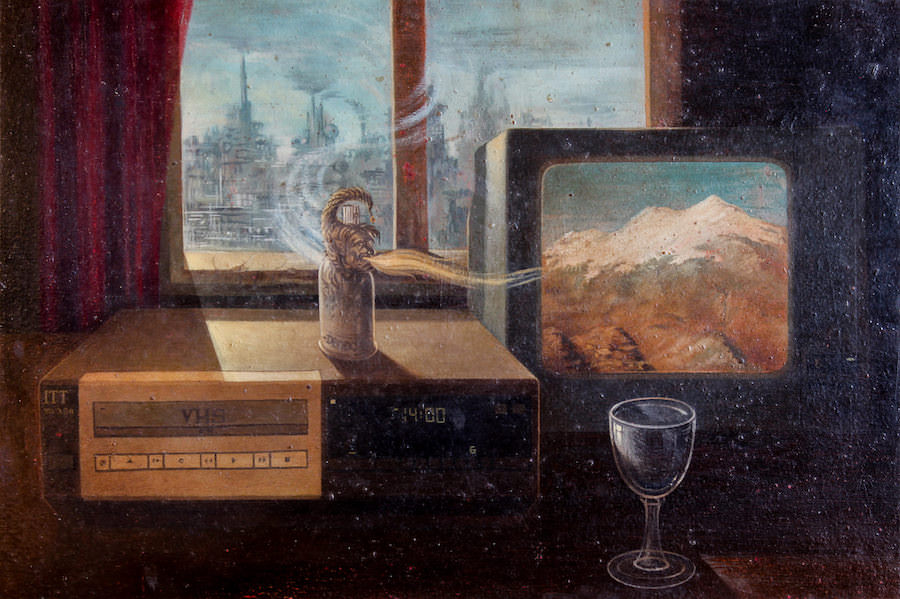THE ART OF MILEN STEFANOV

Milen Stefanov in 2013
Never in a million years would I claim to be an expert on art. But when I met Milen Stefanov and saw his paintings back in 2006, during my first visit to Bulgaria, I felt like I was looking at something somehow special. At the time Milen was working as a craftsman in a small provincial town on the edge of the Balkans. He painted signs, built furniture, restored roofs, and seemed to excel at making or fixing just about anything. But really he had always wanted to be an artist. He was the top of his art classes in college, and his paintings earned regional recognition at competitions and exhibitions. However Milen had never got on well with authority. He was a rebel who wore his hair long and listened to foreign heavy metal music. Despite his obvious and celebrated talent, he made seven applications to study art at the university and was rejected every time.
Milen told me that under the Bulgarian Communist Party there were four components to the entry exam for art university: still life, portraiture, Bulgarian language and politics. The first two were no problem for him. On his seventh application attempt, for example, he was one of just six students out of 2000 to score a perfect 100% for his still life. But with his nonconformist appearance and undisguised disdain for the regime, Milen was simply not the kind of artist that the Party was interested in sponsoring. Over the years, knowing Milen has proven to be a valuable lesson for me. Because I actually do appreciate a lot of communist art and architecture – the monuments and mosaics that Bulgaria produced in those years are often incredible, and I sometimes find them quite moving. But while I’m enamoured by the artists who created them, sometimes I then think of Milen, and I wonder how many other talented artists were suppressed, and forced to abandon their dreams, because they weren’t making the type of art that the politicians wanted.
When I met him, Milen’s paintings were scattered between several building around the town. Some were hanging in his house, perched between his homemade guitars and stacks of books and art magazines. Others were stored in an old barn he owned, where the moisture was already getting to them. I told him that if I enjoyed looking at his art, then probably at least some other people would too... and I encouraged him to take a shot at putting them on the internet. I photographed the paintings and made a website for them over Christmas 2013. Milen was delighted and quite emotional about the results. Having already long ago abandoned his dreams of being recognised as an artist, I think it must have been a big moment for him: having his work seen and appreciated by people around the world, with visitors coming in from Britain, Russia, Canada, Argentina...
Sadly though, Milen was already by that stage fighting a battle that he would not win. Over the years alcohol had crept into his life and become a major part of it. He deteriorated significantly during the time that I knew him, becoming less stable, less communicative, and more unpredictable. I had pitched his paintings to galleries on his behalf, and some had expressed an interest in exhibiting them – but by now his health prevented him from having those sorts of conversations. Our project to promote his work online became increasingly unrealistic. For a number of years the problems got worse, and then after a series of close-calls, warnings, and inevitable relapses, Milen passed away at home on 14 June 2020.
Since then, Milen’s family have become the legal owners of his paintings. When I proposed to them that we continued to promote his work, and perhaps earn him some posthumous recognition, they were very receptive to the idea – and now a small group of us are archiving the collection and discussing the next steps to take.

"Time"

Untitled

"The Benevolent God"

"Ozone"

Untitled

"Robot"

Untitled

Self portrait
© Darmon Richter 2020